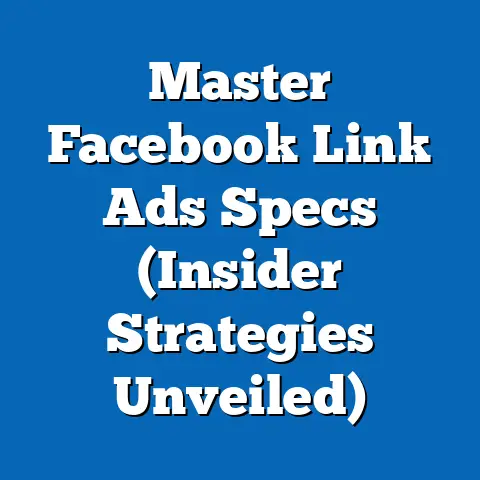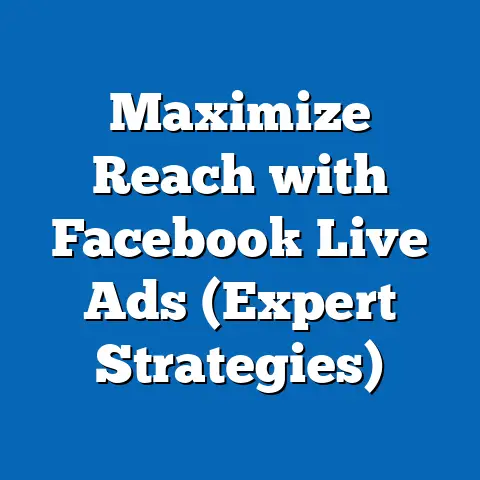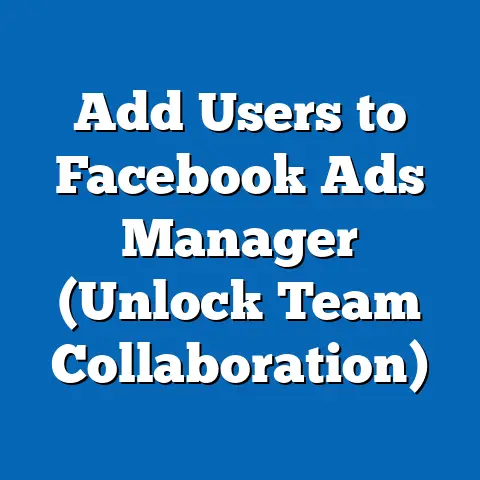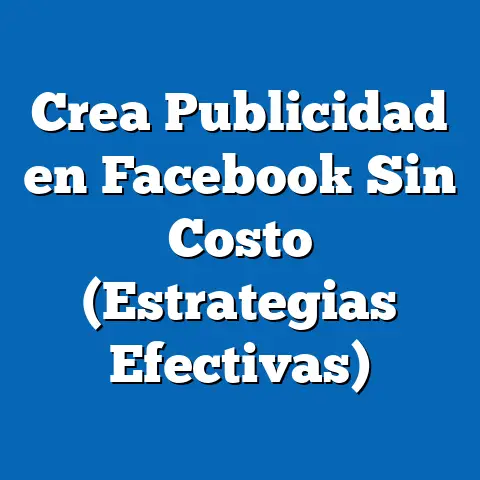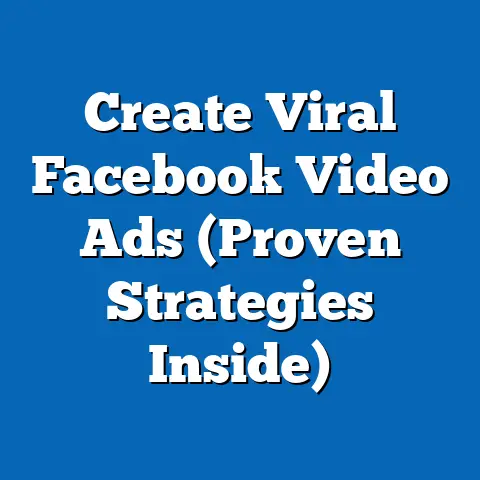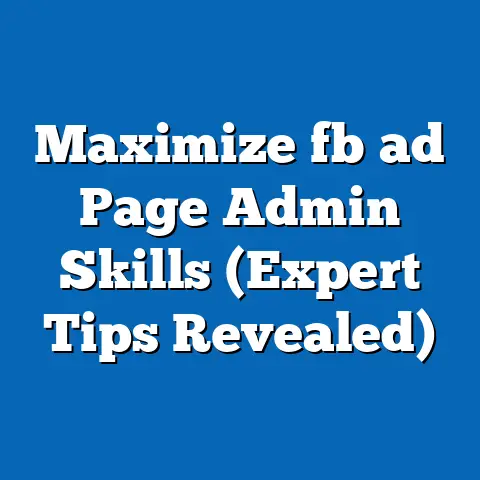Unlock Facebook Ads Success: The Ultimate Checker Guide (Pro Tactics)
Let’s face it, how many times have you felt like you’re throwing money into a black hole with Facebook Ads? I’ve been there, staring at disappointing results, wondering what I was doing wrong. The frustration of low engagement, sky-high costs per click, and conversions that seem to evaporate before your eyes is a feeling every marketer knows all too well. It’s not just about the money; it’s the time, the effort, and the feeling that you’re missing something crucial. In today’s digital landscape, where every click counts, understanding and mastering Facebook Ads is no longer optional – it’s essential for sustainable growth. That’s why I’m sharing this ultimate checker guide, packed with pro tactics to help you unlock the full potential of Facebook Ads and finally achieve the results you deserve.
Understanding the Facebook Ads Ecosystem
Before diving into the nitty-gritty, let’s establish a solid foundation. Think of Facebook Ads as a complex ecosystem with various interconnected components. At its core, Facebook Ads operate on an auction system. Advertisers bid for the opportunity to show their ads to specific users. Facebook’s algorithm then determines which ads are displayed based on factors like bid amount, ad quality, and relevance to the user.
Understanding your audience is paramount. It’s not enough to simply know their age and location. You need to delve deeper into their interests, behaviors, and pain points. This is where Facebook’s rich targeting options come into play.
But it’s not just about who you’re targeting, it’s where you’re targeting them. Facebook offers a range of placements, including:
- Facebook Feed: The most common placement, offering high visibility and engagement potential.
- Instagram Feed: Ideal for visually appealing content targeting a younger audience.
- Audience Network: Extends your reach beyond Facebook and Instagram to a network of partner websites and apps.
- Messenger: Allows you to engage with users directly through personalized messages.
Each placement has its unique characteristics and impacts campaign performance. For example, Instagram might be perfect for showcasing lifestyle products with stunning visuals, while Messenger could be ideal for delivering personalized offers or support.
Takeaway: Facebook Ads is more than just throwing money at the platform. It’s about understanding the auction dynamics, audience psychology, and the strategic placement of your ads. Don’t underestimate the power of platform-specific strategies.
The Importance of Setting Clear Objectives
Imagine setting sail without a destination in mind – you’ll likely end up adrift. The same holds true for Facebook Ads. Defining clear, measurable objectives is the cornerstone of any successful campaign.
Before launching a campaign, ask yourself: What do I want to achieve? Are you aiming to:
- Increase Brand Awareness? (Reach, impressions)
- Drive Website Traffic? (Clicks, landing page views)
- Generate Leads? (Form submissions, email sign-ups)
- Boost Sales? (Purchases, add-to-carts)
Each objective requires a different approach. For example, if your goal is brand awareness, you might focus on reach and frequency, aiming to get your brand in front of as many eyes as possible. On the other hand, if you’re aiming for sales, you’ll want to optimize for conversions, targeting users who are most likely to make a purchase.
It’s crucial to make your objectives SMART:
- Specific: Clearly define what you want to achieve.
- Measurable: Set quantifiable metrics to track progress.
- Achievable: Ensure your goals are realistic and attainable.
- Relevant: Align your objectives with your overall business goals.
- Time-bound: Set a deadline for achieving your objectives.
For example, instead of saying “I want to increase sales,” a SMART objective would be “Increase online sales by 15% in the next quarter.”
Takeaway: Clear objectives are the compass guiding your Facebook Ads journey. They dictate your strategy, targeting, and measurement, ensuring you’re always moving in the right direction. Don’t skip this step, or you’ll be lost at sea.
Crafting Compelling Ad Creatives
Let’s be honest, in the fast-paced world of social media, you have seconds to capture someone’s attention. That’s why your ad creatives need to be nothing short of compelling. This means mastering the art of visuals, copy, and calls to action (CTAs).
Visuals:
- Eye-catching Images/Videos: Use high-quality visuals that immediately grab attention. Think vibrant colors, interesting compositions, and authentic imagery that resonates with your target audience.
- Brand Consistency: Maintain a consistent visual style that aligns with your brand identity. This helps build recognition and trust.
- Relevance: Ensure your visuals are relevant to your product or service and the message you’re trying to convey.
Copy:
- Headline Hook: Start with a headline that immediately grabs attention and sparks curiosity.
- Benefit-Driven: Focus on the benefits of your product or service, rather than just listing features. What problem does it solve? How will it make their life better?
- Concise and Clear: Keep your copy short, sweet, and to the point. Avoid jargon and use language that your target audience understands.
- Speak to Pain Points: Address the pain points and challenges that your target audience faces. Show them that you understand their struggles and have a solution.
Calls to Action (CTAs):
- Clear and Concise: Use clear and concise CTAs that tell users exactly what you want them to do. Examples include “Shop Now,” “Learn More,” “Sign Up,” and “Get Started.”
- Urgency: Create a sense of urgency to encourage immediate action. Examples include “Limited Time Offer,” “Shop Now Before It’s Too Late,” and “Get Your Free Trial Today.”
- Placement: Place your CTA prominently in your ad creative, making it easy for users to click.
A/B testing is your secret weapon here. Try different combinations of visuals, copy, and CTAs to see what resonates best with your audience. I once ran a campaign where simply changing the CTA from “Learn More” to “Get Started” resulted in a 30% increase in click-through rates.
Takeaway: Compelling ad creatives are the bait that lures your target audience in. They need to be visually appealing, persuasive, and relevant to your brand and message. And never underestimate the power of A/B testing!
Targeting the Right Audience
Imagine shouting your message into a crowded stadium – most people won’t hear you, and those who do might not care. That’s why precise targeting is essential for Facebook Ads success. It’s about getting your message in front of the right people, those who are most likely to be interested in your product or service.
Facebook offers a plethora of targeting options, including:
- Demographics: Target users based on age, gender, location, education, and other demographic factors.
- Interests: Target users based on their interests, hobbies, and passions.
- Behaviors: Target users based on their online behavior, such as purchase history, website visits, and app usage.
- Custom Audiences: Target users who have already interacted with your business, such as website visitors, email subscribers, and customers.
- Lookalike Audiences: Create audiences that are similar to your existing customers or website visitors.
Custom Audiences are gold. You can upload your customer list (email addresses, phone numbers) and target them directly. This is incredibly powerful for retargeting or upselling existing customers.
Lookalike Audiences are another game-changer. Facebook analyzes your existing customer data and identifies users who share similar characteristics. This allows you to expand your reach to new potential customers who are likely to be interested in your product or service.
Detailed Targeting options let you fine-tune your audience based on specific interests, behaviors, and demographics. This is where you can really get granular, targeting users who are interested in specific brands, hobbies, or even job titles.
I once worked with a client who was struggling to generate leads for their software product. By creating a Lookalike Audience based on their existing customer list and layering on detailed targeting options related to specific job titles and industries, we were able to increase their lead generation by 40%.
Takeaway: Targeting the right audience is like aiming a laser beam instead of a floodlight. It allows you to focus your efforts on the people who are most likely to convert, maximizing your ROI. Don’t spray and pray – target with precision!
Budgeting and Bidding Strategies
Budgeting and bidding are the financial engines of your Facebook Ads campaigns. It’s about allocating your resources effectively and bidding strategically to get the most bang for your buck.
Budgeting Options:
- Daily Budget: Set a fixed amount you’re willing to spend each day. This is a good option for campaigns that run continuously.
- Lifetime Budget: Set a total amount you’re willing to spend over the entire duration of the campaign. This is a good option for campaigns with a specific end date.
Choosing the right budgeting option depends on your goals and campaign duration. For example, if you’re running a short-term promotion, a lifetime budget might be more appropriate.
Bidding Strategies:
- Automatic Bidding: Facebook automatically sets your bids to get the most results for your budget. This is a good option for beginners or those who want a hands-off approach.
- Manual Bidding: You manually set your bids for each ad set. This gives you more control over your spending and allows you to optimize for specific goals.
There are different manual bidding strategies you can use:
- Lowest Cost: Facebook aims to get you the lowest cost per result possible.
- Cost Cap: You set a target cost per result, and Facebook aims to stay within that limit.
- Bid Cap: You set a maximum bid amount for each auction.
I generally recommend starting with automatic bidding to get a baseline understanding of performance. Then, as you gather more data, you can switch to manual bidding to fine-tune your strategy.
Monitoring Spend:
It’s crucial to monitor your spend regularly and adjust your budgets based on performance. If you’re seeing good results, you might want to increase your budget to scale your campaign. On the other hand, if you’re not seeing the results you want, you might need to decrease your budget or pause your campaign altogether.
Takeaway: Budgeting and bidding are not just about setting numbers; they’re about making strategic decisions that align with your goals and maximize your ROI. Don’t just set it and forget it – actively manage your budget and bidding strategy.
Analyzing Performance Metrics
Data is your best friend in the world of Facebook Ads. Analyzing performance metrics is essential for understanding what’s working, what’s not, and how to optimize your campaigns for better results.
Key Performance Indicators (KPIs) to Track:
- Impressions: The number of times your ad was shown.
- Reach: The number of unique people who saw your ad.
- Click-Through Rate (CTR): The percentage of people who saw your ad and clicked on it.
- Cost Per Click (CPC): The average cost you pay for each click on your ad.
- Conversion Rate: The percentage of people who clicked on your ad and completed a desired action (e.g., purchase, sign-up).
- Cost Per Conversion (CPC): The average cost you pay for each conversion.
- Return on Ad Spend (ROAS): The amount of revenue you generate for every dollar you spend on advertising.
Facebook Ads Manager provides a wealth of data on your campaign performance. You can use it to track these KPIs and identify areas for improvement.
Attribution:
Understanding attribution is crucial for accurately measuring the impact of your Facebook Ads campaigns. Attribution refers to the process of assigning credit for a conversion to different touchpoints in the customer journey.
For example, a customer might see your Facebook ad, click on it, but not make a purchase until a week later after receiving an email from you. In this case, both the Facebook ad and the email played a role in the conversion.
Facebook offers various attribution models, such as:
- Last-Click Attribution: Assigns all the credit to the last click before the conversion.
- First-Click Attribution: Assigns all the credit to the first click in the customer journey.
- Linear Attribution: Distributes credit evenly across all touchpoints in the customer journey.
Choosing the right attribution model depends on your goals and the complexity of your customer journey.
Takeaway: Data is the compass that guides your optimization efforts. By tracking and analyzing performance metrics, you can identify areas for improvement and make data-driven decisions that maximize your ROI. Don’t fly blind – let the data guide you!
Troubleshooting and Optimizing Campaigns
Even the best-laid plans can sometimes go awry. That’s why it’s essential to have a troubleshooting checklist and a set of optimization tactics at your disposal.
Troubleshooting Checklist:
- Low Reach/Impressions: Check your targeting settings, bid amount, and ad quality.
- Low CTR: Review your ad creatives, copy, and targeting.
- High CPC: Optimize your ad quality, targeting, and bidding strategy.
- Low Conversion Rate: Review your landing page, offer, and checkout process.
- High CPC: Optimize your ad creatives, targeting, and landing page.
Optimization Tactics:
- Adjust Targeting: Refine your targeting based on performance data.
- Modify Creatives: Refresh your ad creatives with new images, videos, and copy.
- Reallocate Budget: Shift your budget to ad sets that are performing well.
- A/B Test: Continuously test different variations of your ads to identify what works best.
- Landing Page Optimization: Ensure your landing page is relevant to your ad and optimized for conversions.
I once worked with a client whose campaign was generating a lot of clicks but very few conversions. After analyzing their landing page, we discovered that it was slow-loading and not mobile-friendly. By optimizing their landing page for speed and mobile responsiveness, we were able to increase their conversion rate by 50%.
Takeaway: Troubleshooting and optimization are ongoing processes. By regularly monitoring your campaigns and implementing these tactics, you can identify and address issues quickly and improve your overall performance. Don’t just sit back and watch – actively troubleshoot and optimize!
Staying Ahead of the Curve
Facebook Ads is a constantly evolving landscape. The platform is always rolling out new features, algorithm changes, and advertising policies. That’s why it’s crucial to stay ahead of the curve and adapt your strategies accordingly.
Resources for Staying Informed:
- Facebook Business Help Center: The official resource for all things Facebook Ads.
- Facebook Marketing Partners: A network of trusted partners who can provide expert guidance and support.
- Industry Blogs and Publications: Stay up-to-date on the latest trends and best practices by reading industry blogs and publications.
- Online Communities: Join online communities and forums to connect with other marketers and share insights.
- Facebook Blueprint: Facebook’s official training platform for marketers.
Continuous Learning:
The key to long-term success with Facebook Ads is continuous learning. Stay curious, experiment with new features, and don’t be afraid to challenge the status quo.
Adapting Strategies:
Be prepared to adapt your strategies based on algorithm changes, industry trends, and performance data. What worked yesterday might not work today, so it’s important to be flexible and agile.
Takeaway: The world of Facebook Ads is constantly changing. By staying informed, continuously learning, and adapting your strategies, you can stay ahead of the curve and maintain a competitive edge. Don’t get left behind – stay ahead of the curve!
Conclusion
Facebook Ads can be a powerful tool for driving business growth, but it requires a systematic approach, ongoing analysis, and a commitment to understanding the nuances of the platform. By following the pro tactics outlined in this guide, you can unlock your potential for Facebook Ads success and achieve the results you deserve.
Remember, success in this competitive space requires ongoing analysis, adaptation, and a commitment to understanding the nuances of the platform. Don’t be afraid to experiment, test new strategies, and learn from your mistakes.
Now, it’s time to take action. Review your current Facebook Ads campaigns and identify areas for improvement. Implement the tactics outlined in this guide and track your results. With consistent effort and a data-driven approach, you can unlock the full potential of Facebook Ads and achieve your business goals. Go forth and conquer the Facebook Ads landscape!

